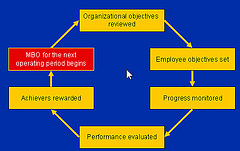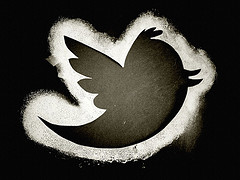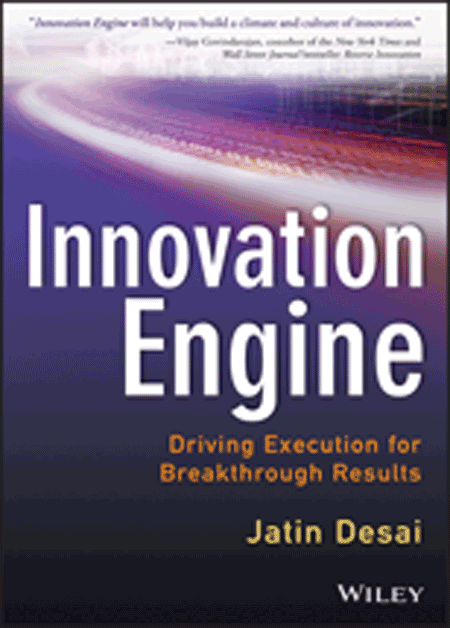Browse by Tag
- "Real" Innovation (2)
- Alignment (6)
- Business Innovation (9)
- Business Plan (2)
- Business Plans (1)
- Creativity (24)
- Critical Success Factors (4)
- Entrepreneurship (9)
- Global Competiveness (4)
- Human Side (11)
- India (1)
- Innovation (4)
- Innovation Consulting (18)
- Innovation Killers (3)
- Innovation Management (18)
- Innovation Tools (17)
- Innovation Training (24)
- Innovations (7)
- Inventions (16)
- IT Innovation (1)
- Leaders (5)
- Leadership (20)
- Leadership Development (13)
- Organizational Leadership (2)
- Organizational Strategy (20)
- Personal Values (6)
- Prediction (5)
- Strategic Innovation (38)
- strategic planning process (4)
- Strategy (3)
- Training (1)
- Vision (5)
- Weekly Dose (8)
Posts by Month
- 2014
- 2013
- 2012
- 2011
- 2010
- 2009
- 2008
- 2006
How to Define Innovation Objectives and Innovation Goal
To help facilitate a strong leadership conversation about innovation objectives and innovation goals, here are some examples of why you might choose to enable an innovation engine for your organization:
- To differentiate your organization in the marketplace
- To build customer loyalty
- To identify savings potential
- To achieve revenue potential
- To accelerate exploitation of new business ideas worthy of pursuing
- To a build climate and culture of innovation as per the organization's innovation mission
- To become a leading innovation brand for products and services in the markets served and new markets you may serve
- To improve and expand current products and services
- To access new technologies
- To access new markets
- To identify market trends
- To improve product quality and associated core processes
- To improve employee attraction, engagement, and retention
- To develop new competencies

Defining the Innovation Goal
The innovation goal should be visionary and exciting. It should be something that has not seen before, measurable at least once per year (eventually more often), customer focused, and ultimately delivering value (top line, mid line and bottom line).
Following are some examples of innovation goals:
- Increase the product pipeline from x to y, to grow the top line by 5% better than your sector's GDP.
- Annually achieve 25% additional margin from new customer-driven services.
- Increase the top line every three years by 25%.
- Double the top line and bottom line every three years.
- Achieve 25% of the top line from new services created within the past 24 months.
- Develop new customer-driven products from the top ten customers that will increase net margins by 5% every year.
- Build a new S-Curve: Invent a completely new business with a new category of offerings.
- Improve customer acquisition ratio by 15% every year for the next three years.
- Achieve a customer satisfaction index (CSAT) (or some other best practices method such as net promoter score (NPS) score of 6.0 out of 7.0 (85% or better).
- Achieve 25% net profit from 3 new businesses and 25 new current product enhancements in the next five years.
- 1% profit before income tax (PBIT) above the current PBIT targets.
- Top customers rate us as most innovative in markets and categories we serve.
- 2x/3y: Grow 2x every three years, both top line and bottom line.
- 3/30/3: Within three years achieve a rate of 30% new revenue from products/services introduced in last three years.
- 20/20: 20% of new business (top line) should come from 20% of new customers every year.
- 10/20/30: Ten new offerings that yield 20% growth in revenue and 30% growth in profitability.
- 50% of all products should be engineered or should include technologies from outside the firm by 2020.
These are good examples of innovation goals to consider. Use the list to engage senior leaders in dialog, debate, and consensus. Then, define innovation goals for your company and for each business unit.
If your innovation initiative is for the entire enterprise, one goal should be directly linked to the business strategy.
If you are rolling out innovation only in your own business unit or information technology department, the goal should be aligned to the area's business or operational strategy.
Whatever you choose as your innovation goal, it should be fixed for a minimum of three years. At the end of three years, you can always enhance it or pick an alternative.
The Takeaway
To communicate the innovation agenda to your organization you must first clearly define the innovation strategy, objectives and goals.
Over to you. Please comment below.
- How do you plan to motivate your company's employees to generate innovative ideas and products?
- What is your goal for company innovations in the next 12 months?
- What other items would you add to the above lists?
8 Environmental Factors Creating Organizational Friction
Mechanical organizations are machinelike and effective when the environmental factors are predictable. But in today's world, it is impossible for such companies to manage the type of change occurring around them. As an example, here are eight types of environmental factors creating friction at all levels:
1. Technological factors. Fast new technologies causing rapid product obsolescence.
2. Economic factors. Unpredictable prices, costs, currency rates, interest rates, taxes.
3. Competitive factors. Aggressive, global, highly innovative, threats from niche players, competitors who are also customers and partners.
4. Labor factors. Increased scarcity of skilled professionals, mobile workforce, increased employee benefits expenses, more reliance on contract labor.
5. Resource factors. Scarcity, increasing specialization, unknown sources of supply, rapid obsolescence.
6. Customer factors. More demanding, complex, market fragmentation, narrow market segments, increased acquisitions costs.
7. Legal and regulatory factors. More aggressive, increased costs, unlimited product liability, growing compliance on free and fair trade.
8. Global factors. Real-time communications, production, distribution, logistics, sophistication of supply chain partners, customers and competitors located anywhere in the world, outsourcing pressures, international strategic alliances.
Mechanical Engine Versus Innovation Engine
These and many other issues are generating additional pressures for today's employees and managers in an already mechanistic and heartless environment within organizations. Due to these pressures, leaders have focused primarily on survival, with little focus on achieving sustained growth.

Is there a way out? Yes.
The primary way out is to evolve today's strategic operating model based on mechanistic, bureaucratic, and hierarchical practices (machinelike) toward an innovation-driven execution model.
Machinelike companies focus on bottom-line performance as the primary measurement for most management decisions, at any cost. Focus is on the short-term. These firms are weak because they are inefficient at managing their future.
Experience shows that the companies that build an innovation engine are more adaptable, flexible, fast, aggressive, innovative, and able to adjust to dynamic, threatening, and a complex external environment. These firms do not take the external environment as a given. Instead, they embrace it as a challenge and act as an agent of change, leading customers, creating new markets, and rewriting the rules of the industry they serve.
Performance Wheel Versus Innovation Wheel
To better understand the two machines, I'd like to use the metaphor of a bicycle. The bicycle represents an engine. The fuel comes from a human being riding it, instead of gasoline/petrol we use in other machines.
The athlete riding is similar to the leadership team members who models the values, beliefs, skills, and behavior of the organization. The bike frame represents the organizational form-firm strategy, structure, processes, and culture.
The performance wheel is the back wheel, which represents practices for achieving organizational effectiveness, efficiencies, and stakeholder management and includes customers, suppliers, shareholders, and partners. This wheel is the source of power and acceleration for individuals, teams, and the organization.
The innovation wheel, the front wheel, represents direction and clarity about the future. It is the organization's capacity for two very important competencies: corporate entrepreneuring ( intrapreneurship) and strategic renewal. The front wheel is the first to sense new opportunities to maneuver based on the eight (internal and external) environmental factors listed previously. The innovation wheel provides the first experience of the environmental factors, the road ahead, and the ability to conduct quick experiments in the turbulent race.
Misplaced Organizational Focus
Unfortunately, today's organizations primarily focus on the back wheel to achieve bottom-line optimization, which is why it is called the performance wheel. The values of this wheel calls for power and acceleration, but if the motives of the organizational athletes (leaders at the top) are flawed, results can lead to disaster-we have seen plenty of examples. The company may move in wrong directions, lose focus on what is ahead, not make fast enough decisions to alter the path, not be sensitive to environmental conditions, and watch others pass by.
Without the front wheel of innovation, the organization has little to no strategic lens for what is possible ahead and what directional decisions to make because the front wheel is missing or ill functioning, most teams at the top make the same decisions as their competitors. The goal of this wheel is to turn the highly mechanistic athlete into an innovative competitor who can easily gather new knowledge, experiment fast, and adapt quickly to outmaneuver other competitors in the race.
Most organizations are pretty good at operating the back wheel; they just need to improve management practices and associated discipline. For managers, as practitioners, the back wheel is a safe zone because the artifacts used are metrics, scorecards, and quantitative analysis-hard stuff. For the front wheel, though, the primary values are qualitative, abstractions, and the intuition to make midcourse corrections. Due to emphasis on performance, managers lack experience operating the front wheel-the innovation wheel.
The Takeaway
The best performing companies evolve from machinelike short-term focus organizations to an innovation execution long-term focus.
It's Your Turn. Please comment below.
1. Is your organization focused on the performance wheel or the innovation wheel?
2. What steps has your organization taken to be more innovative and less mechanistic?
3. Which of the outlined Environmental Factors do you feel are most important?
Top 50 Innovation Twitter Sharers of 2013
My friends over at Innovation Excellence are always hard at work writing and curating materials relevant to those of us in the Innovation space. They compiled Top 50 Innovation Twitter Sharers of 2013. The names appear in no particular order.

Top 50 Innovation Tweeters of 2013:
• Paul Hobcraft (@paul4innovating)
• Kevin McFarthing (@innovationfixer)
• Ralph Christian Ohr (@ralph_ohr)
• Tim Kastelle (@timkastelle)
• Braden Kelley (@innovate)
• Greg Satell (@digitaltonto)
• Gregg Fraley (@greggfraley)
• Jeffrey Phillips (@ovoinnovation)
• Nicolas Bry (@nicobry)
• Jeffrey Baumgartner (@creativeJeffrey)
• Matthew E May (@matthewemay)
• Stefan Lindegaard (@lindegaard)
• Mike Brown (@brainzooming)
• Deborah Mills-Scofield (@dscofield)
• Shaun Coffey (@shauncoffey)
• Rowan Gibson (@rowangibson)
• Bill Fischer (@bill_fischer)
• Dave Gray (@davegray)
• Drew Marshall (@drewcm)
• Paul Sloane (@paulsloane)
• Jorge Barba (@jorgebarba)
• Calestous Juma (@calestous)
• JR Reagan (@ideaxplorer)
• Cathryn Hrudicka (@creativesage)
• Juan Cano-Arribi (@pull_innovation)
• Vincent Carbone (@insitevc)
• Sarah Caldicott (@SarahCaldicott)
• Eric Shaver (@ericshaver)
• Max McKeown (@MaxMckeown)
• Boris Pluskowski (@bpluskowski)
• Doug Collins (@innoarchitect)
• LDRLB (@ldrlb)
• Andrea Meyer (@andreameyer)
• Stephen Shapiro (@stephenshapiro)
• Marc Sniukas (@sniukas)
• Saul Kaplan (@skap5)
• Nilofer Merchant (@nilofer)
• Alex Osterwalder (@alexosterwalder)
• Graham Hill (@grahamhill)
• Jose Briones (@brioneja)
• Arie Goldshlager (@ariegoldshlager)
• Scott Berkun (@berkun)
• Julie Anixter (@julieanixter)
• Ross Dawson (@rossdawson)
• Ian McCarthy (@toffeemen68)
• John Hagel (@jhagel)
• Jose Baldaia (@jabaldaia)
• Frank Piller (@masscustom)
• Scott Anthony (@ScottDAnthony)
• Gary Schirr (@ProfessorGary)
Bonus tweeter Jatin Desai (@jhdesai)
The Takeaway
Innovation is a vast, ever changing field. Keep up with some of the leading thinkers by following folks compiled in the list.
It is your turn. Share your wisdom. Please comment below.
1. Who do you follow on Twitter that is not on the list and what is their Twitter handle?
2. Where else do you gain knowledge from Innovation thinkers?
3. What is the most interesting piece of Innovation knowledge you have gained this month?
U.S. Innovation Leaders need IQ, EQ & CQ (Part Two of "Judas Goats")
With the U.S. appearing to suck at globalization and largely indifferent but dependent on the domestic market, we need leadership willing to step up and innovate with a capital "I" if we intend to remain in the top 3. It can be done. We are still viewed as the country of freedom and ingenuity around the world, but more and more we are being viewed as resting on our past accomplishments and steering rudderless, albeit arrogantly, through cultural impacts we don't quite understand and don't appear to appreciate.
We Are All Connected - Domestically and Globally
If we figure the world will just accept us the way we are because we are America, we need to examine that attitude and quickly. How much time do you think the Chinese spend learning about America? Cultural impact in the U.S. from voting to job creation and economic recovery, affects us all within and without our borders, and domestic and international markets. We need capital "I" Leaders in the U.S. to embrace not only IQ and EQ, but also CQ (cultural quotient). Consider India; America by no means has an exclusive on innovation.
While JC Penney apparently embraced the risk side of innovation hiring Ron Johnson, at least they tried. Demographic differences between the loyal Apple consumers vs. loyal Penney consumers relied on an Apple innovation methodology that couldn't make the leap. Yet, JC Penney may still pull a "Coke" - to - "Coca Cola Classic" and now build on the needs and desires of their demographic strengths to bring back a new and improved "classic" approach. Finding the "classic" in emerging markets as well could be a significant and even sustainable coup. But to target effectively they need to know the markets and the cultures, and be set up to strike when the timing is right.
Leaders must move faster regardless of sector. Crowd sourcing like Twitter, makes the whims of the consumer more volatile than ever before, whether it's basics of life like food, or the latest smart phone. Share one weight loss recipe featuring a specific ingredient or nutraceutical; demand changes instantly and involves multiple markets and cultures.
As a leader, if you are acting as the "judas goat" still herding your company to a rigid, specific destination bogged down in status quo, it will be as sheep to slaughter.
What factors are the most critical for emerging achievers and leaders of today when they predict a future for themselves?
"Self-awareness, high intelligence, high emotional quotient, extremely high integrity, multiple discipline knowledge, voracious appetite for new knowledge." ~ Jatin Desai
Leaders need to loosen up and embrace the reality that "90% of what we call 'management' consists of making it difficult for people to get things done." ~ Peter Drucker
Need help developing a clear innovation strategy, penetrating emerging markets, leadership development? Visit The DeSai Group. Follow Jatin Desai on LinkedIn and Twitter for juicy innovation ideas and tidbits.
Jatin Desai CEO, and author of Innovation Engine (May 2013 release by Wiley International), addresses C-Suite groups, delivers keynotes, leads workshops and joins with corporations and organizations to design and implement innovation programs and optimize existing programs, in the USA and internationally. Innovation Engine is now available in digital and hardcover versions at your favorite retail online or brick and mortar outlet.

|
"Innovation Engine will help you build a climate and culture of innovation. A must-read for every serious executive desiring innovation as a daily habit in his or her organization and to drive innovation execution."
-Vijay Govindarajan, coauthor of the New York Times and
Wall Street Journal bestseller Reverse Innovation
.
Innovation USA - Leaders or "Judas Goats?" U.S. Leadership Please Step Forward
Innovation USA - Leaders or "Judas Goats?" U.S. Leadership Please Step Forward
Here in the USA the one question begging to be asked and answered is, "Are we simply sitting too comfortably where we are?" The up and coming countries and markets are busy manufacturing most of what we consume. While they are motivated, innovating and expanding, we are well - sitting.
Not only are many organizations still stuck in their chairs instead of examining the effectiveness and long term feasibility of status quo, but even worse, it appears that while a lot of lip service has been given to the term "innovation" action has been blatantly MIA.
Touting innovation officers, teams, strategy and even innovation "days," doesn't mean companies are actually engaging in innovation. Setting aside the publication of numerous books on innovation and the mention of the "I" word over 33,000 times in annual reports filed with the SEC, it appears likely that using the "I" word is mainly a ploy to convince investors that "change" is taking place, even though by self-admittance most executives concede their companies still haven't developed clear innovation strategies.
What does it take to initiate real change? What kind of intervention is necessary? Look at the complaining and excuses presented by US companies when challenged, such as:
- Our business is more complicated…
- We need less regulation…
- That's not how we do things…
- We can't afford to re-tool, invest in new tech…
- Our customers are happy the way things are…
We need to ask: "Really? No need to innovate?"
What about new markets, evolving customer needs and wants, trade deficit with China, run-away growth in world markets, stagnant growth in U.S. markets, and limited U.S. penetration of world markets? What about VISION for the future?
There is plenty of evidence portraying a very different picture and begging for leaders to step up to the task of implementing real innovation in U.S. companies, instead of just lip service.
Domestically, it's been said that while around 30% of companies think they have introduced a major innovation within the past 6-12 months, only 5% of consumers agree. Presently, for instance, the perception is Google is beating the pants off Apple with innovations and methodology - brilliant new stuff, like "Glass." Consumers want to be seen, heard, listened to, responded to and enticed with "new" - note the T-Mobile inspired discussion on contracts - finally.
While we sit in our big chairs at home focusing mainly on domestic markets in largely an unresponsive way, we are losing big in global markets. Director of Tuft University's Institute for Business in the Global Context, Baskar Chakravorti, recently released a paper detailing statistics and an argument as to why U.S. companies lag far behind in penetrating emerging markets.
Although American brands are ubiquitous abroad, U.S. companies actually realize only around 7% - 10% of their overall revenues from emerging markets. In 2010 those markets represented 36% of global GDP - why is U.S. share so small while our "global peer average [is] 17%" according to HSBC estimated revenues.
Perception is Everything . Real leadership is multi-faceted, and above all based on communication, concern and relationship with real people - domestically and globally, and within and without an organization.
The great "growth" chasm between West and East cannot be filled by just moving our manufacturing east, negatively impacting even more jobs in America. That only makes Americans in this already high unemployment climate, well, angry. Emerging economies are still the ever-growing elephant in the room. Could it be that many U.S. corporations don't really care about the needs of Americans as workers or consumers in spite of bail-outs?
The combination of continued job decline stateside, along with demand for low priced goods by consumers hit with shrinking wages, plus U.S. companies' addiction to cost cutting to raise the bottom line, may ultimately be our undoing. Additionally, complications like China's government control of their currency, seemingly gives the U.S. a lose/lose situation, while the 3rd largest economy in the world, China - has the largest population and largest potential market, in the world. The Chinese people won't indefinitely accept a lower standard of living. When do we get to sell to them?
What do U.S. Leaders need for success in domestic and world markets?
We are still viewed as the country of freedom and ingenuity around the world, but more and more we are being viewed as …
See Part Two of "Judas Goats": U.S. Innovation Leaders Need IQ, EQ and CQ
Need help developing a clear innovation strategy, penetrating emerging markets, leadership development? Visit The DeSai Group. Follow Jatin Desai on LinkedIn and Twitter for juicy innovation ideas and tidbits.
Jatin Desai CEO, and author of Innovation Engine (May 2013 release by Wiley International), addresses C-Suite groups, delivers keynotes, leads workshops and joins with corporations and organizations to design and implement innovation programs and optimize existing programs, in the USA and internationally. Innovation Engine is now available in digital and hardcover versions at your favorite retail online or brick and mortar outlet.

|
"Innovation Engine will help you build a climate and culture of innovation. A must-read for every serious executive desiring innovation as a daily habit in his or her organization and to drive innovation execution."
-Vijay Govindarajan, coauthor of the New York Times and
Wall Street Journal bestseller Reverse Innovation

